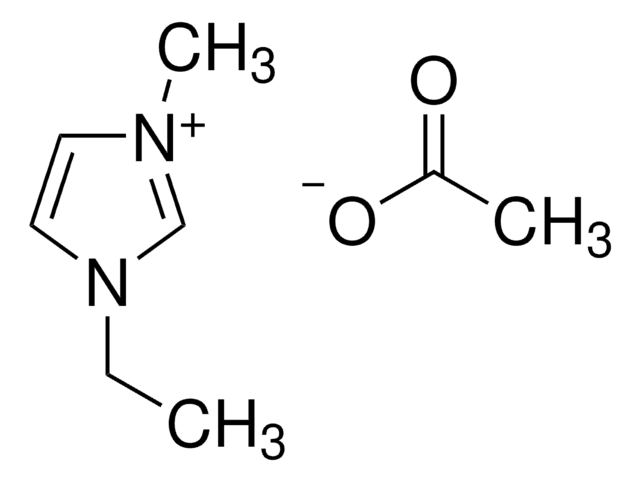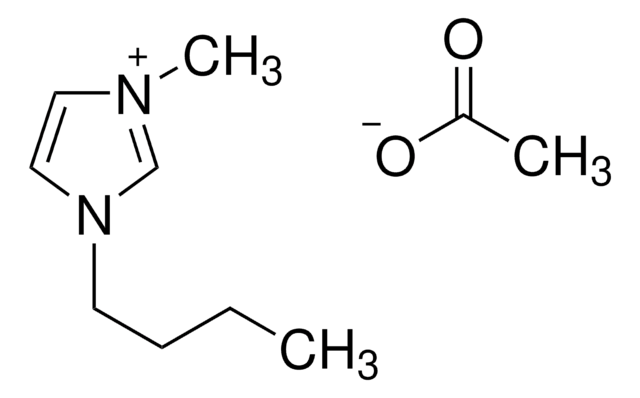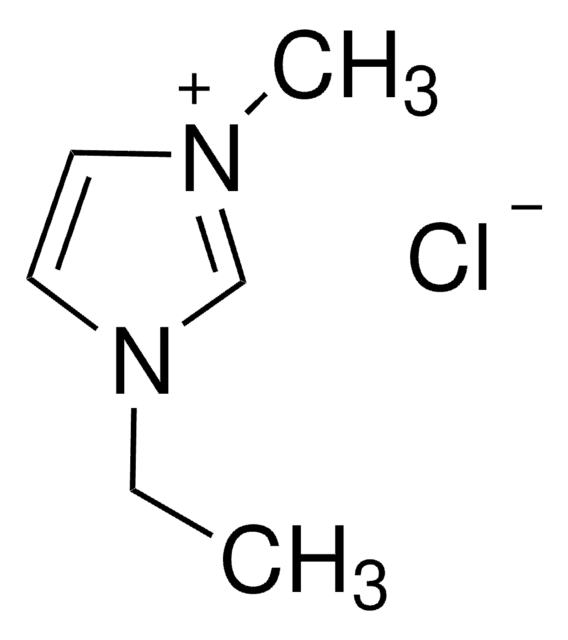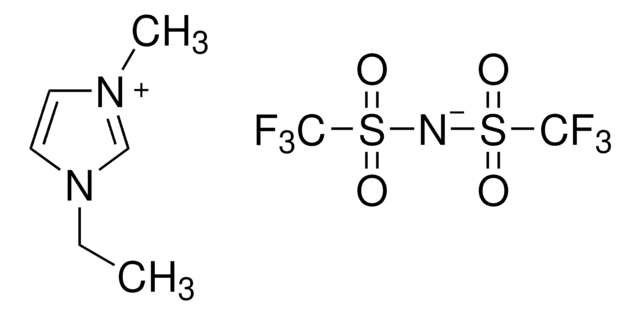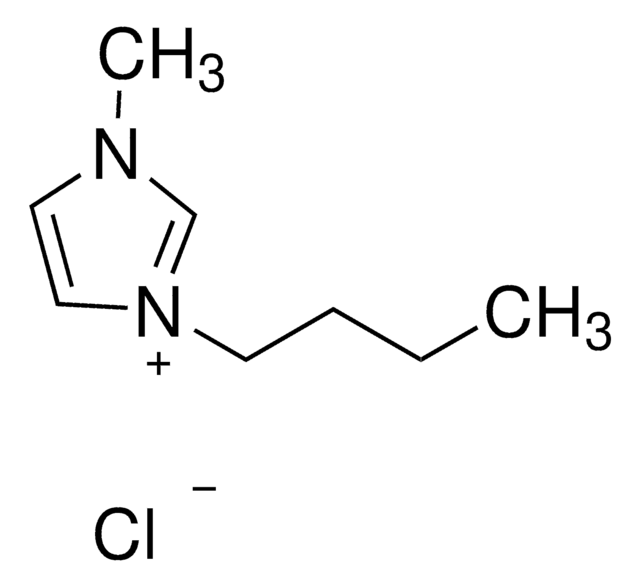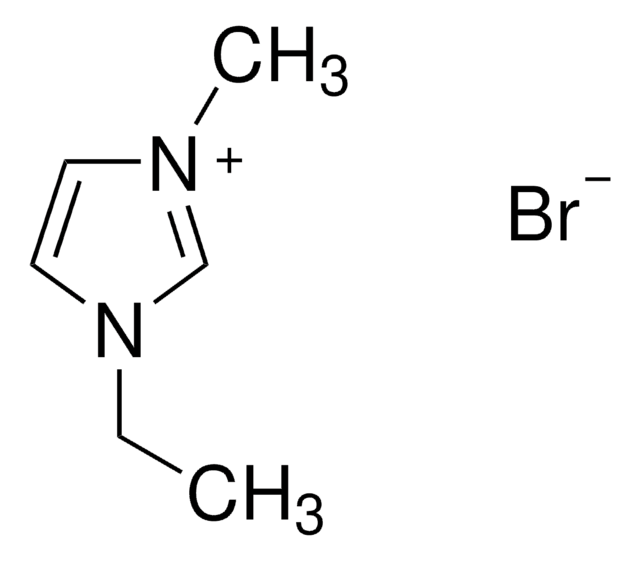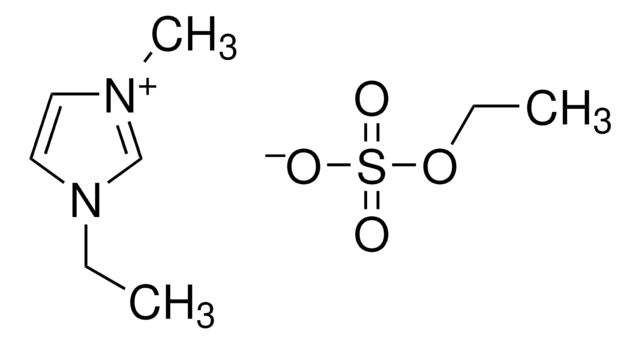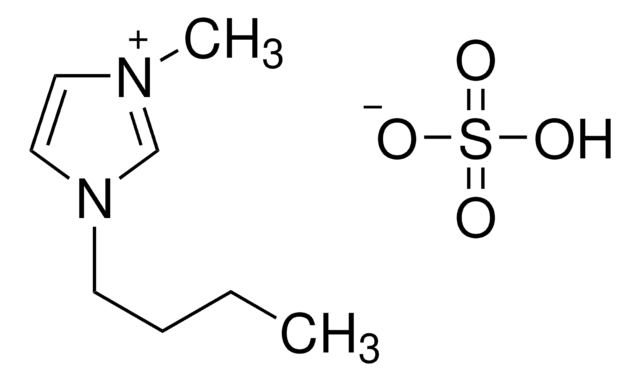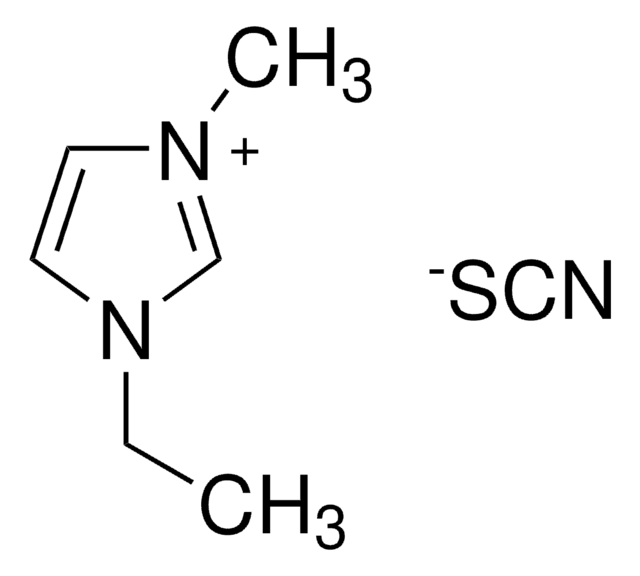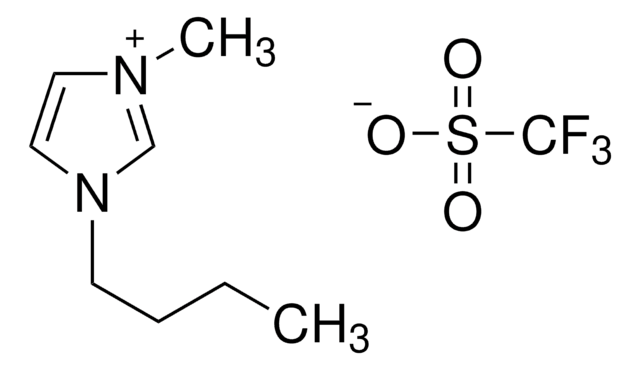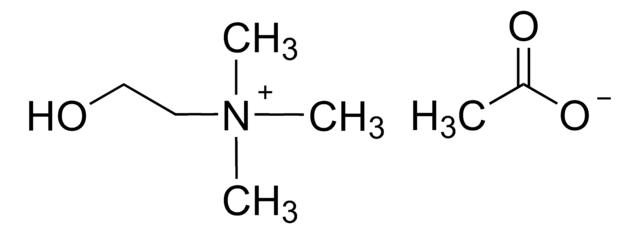51053
1-Ethyl-3-methylimidazolacetat
≥95.0% (HPLC)
Synonym(e):
EMIM Ac
About This Item
Empfohlene Produkte
Qualitätsniveau
Assay
≥95.0% (HPLC)
Ursprung
Switzerland origin
mp (Schmelzpunkt)
>30 °C (product can occur as an undercooled melt)
Dichte
1.101 g/cm3 at 20 °C
SMILES String
CC([O-])=O.CCn1cc[n+](C)c1
InChI
1S/C6H11N2.C2H4O2/c1-3-8-5-4-7(2)6-8;1-2(3)4/h4-6H,3H2,1-2H3;1H3,(H,3,4)/q+1;/p-1
InChIKey
XIYUIMLQTKODPS-UHFFFAOYSA-M
Suchen Sie nach ähnlichen Produkten? Aufrufen Leitfaden zum Produktvergleich
Allgemeine Beschreibung
Anwendung
Signalwort
Warning
H-Sätze
Gefahreneinstufungen
Acute Tox. 4 Oral - Skin Irrit. 2 - Skin Sens. 1B
Lagerklassenschlüssel
10 - Combustible liquids
WGK
WGK 3
Flammpunkt (°F)
327.2 °F - closed cup
Flammpunkt (°C)
164 °C - closed cup
Persönliche Schutzausrüstung
Eyeshields, Gloves, multi-purpose combination respirator cartridge (US)
Analysenzertifikate (COA)
Suchen Sie nach Analysenzertifikate (COA), indem Sie die Lot-/Chargennummer des Produkts eingeben. Lot- und Chargennummern sind auf dem Produktetikett hinter den Wörtern ‘Lot’ oder ‘Batch’ (Lot oder Charge) zu finden.
Besitzen Sie dieses Produkt bereits?
In der Dokumentenbibliothek finden Sie die Dokumentation zu den Produkten, die Sie kürzlich erworben haben.
Kunden haben sich ebenfalls angesehen
Artikel
Under the trade name BASIONICS™, BASF offers a portfolio of Ionic Liquids—mainly based on imidazolium cations. The BASIONICS™ portfolio opens up a broad range of basic properties of Ionic Liquids and is classified into standard, acidic, basic, liquid at RT and low viscosity products and opens up a wide range of possible applications.
Unser Team von Wissenschaftlern verfügt über Erfahrung in allen Forschungsbereichen einschließlich Life Science, Materialwissenschaften, chemischer Synthese, Chromatographie, Analytik und vielen mehr..
Setzen Sie sich mit dem technischen Dienst in Verbindung.